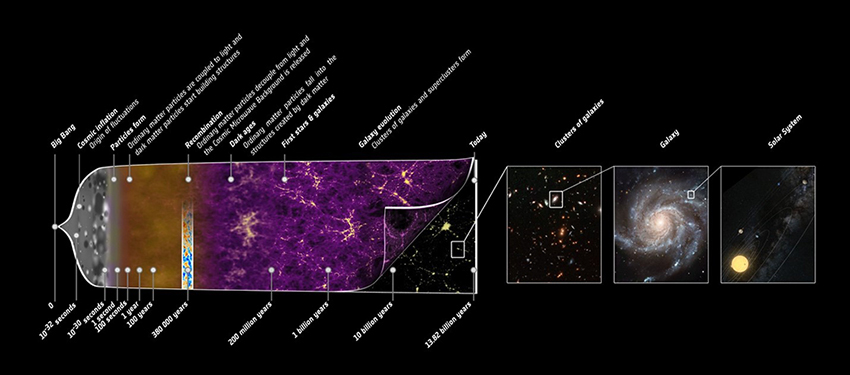
Cosmology researchers at JPL are investigating the origins, evolution, and composition of the universe, beginning with the inflationary era. All relevant areas of activity are pursued, including: 1) theoretical modeling of astrophysical and cosmological phenomena, 2) development of data analysis and science extraction enabling frameworks to support the ongoing and future space missions, and suborbital observing efforts, and 3) design and implementation of enabling detector technologies and instrumentation used to observe the universe on large scales and study distant objects.
Current Research Tasks
Cosmologists at JPL are studying the history of the Universe from the Big Bang, through reionization era, up to the present day. Microwave observations from the Planck spacecraft, and ground-based experiments such as BICEP2, enabled determination of key parameters of the currently accepted Lambda-CDM cosmological model with unprecedented accuracy. The ongoing investigations in this area are searching for evidence of primordial gravitational waves from the Big Bang. The new technique of intensity mapping at frequencies from the infra-red to radio will attempt to reveal the large-scale structure of the Universe throughout its history. JPL cosmologists are also aiming to explain the nature of Dark Energy, a hypothetical cause for the accelerated expansion of the Universe in recent times. For this they use ground-based facilities such as the Prime Focus Spectrograph on the Subaru Telescope, and DESI, plan future missions such as Euclid or Roman Space Telescope (formerly known as WFIRST), and develop advanced technologies for future space-based astrophysics missions. These technologies could provide new capabilities for sensitive astronomical observations and gather a broad range of information in all areas including photometry, polarization and spectroscopy. JPL researchers are involved in developing tools to study a rich and diverse set of astrophysical data already obtained with a number of ground-based and space telescopes, including Hubble, Spitzer, Planck, and JUNO, as well as those coming in the future including Euclid, Roman, LISA and SPHEREx.
Selected Research Topics
Planck
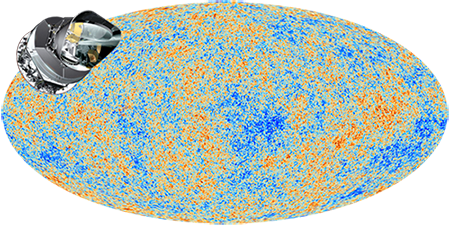
NASA had significant participation in the EuropeanSpace Agency's mission Planck. JPL made essential contributions to Planck, such as thermal design (V- grooves), sorption coolers, bolometers for High Frequency Instrument, and novel data analysis frameworks (e.g. HEALPix, Commander, FEBeCoP, and more). Planck was the third-generation space mission designed to observe the cosmic microwave background (CMB) with unprecedented angular resolution, sensitivity, and frequency coverage. Priceless legacy of Planck mission includes the most accurate and detailed full sky maps of both the CMB anisotropies, and many sources of astrophysical foreground emission. Planck's precise cosmological measurements allowed to answer important questions about the origin of the Universe and the formation of its large-scale structure. Analysis of Planck data has also revealed numerous star-forming clouds across the Milky Way, and has uncovered a previously invisible population of billion-year-old galaxies shrouded in dust.
Nancy Grace Roman Space Telescope
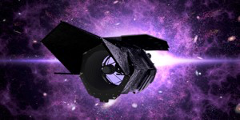
The Roman Space Telescope is a NASA observatory designed to unravel the secrets of dark energy and dark matter, search for and image exoplanets, and explore many topics in infrared astrophysics. The Telescope will have two instruments, the Wide Field Instrument, and the Coronagraph Instrument. The Wide Field Instrument (with a field of view that is 100 times greater than the Hubble infrared instrument) will enable the generation of new big pictures of the universe that willhelp astronomers explore some of the greatest mysteries of the cosmos, including why the expansion of the universe seems to be accelerating. The Roman Space Telescope will also feature a coronagraph technology demonstration instrument designed to directly image exoplanets by blocking out a star's light, allowing the much fainter planets to be observed.
LISA
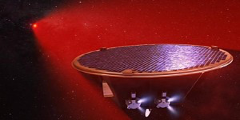
LISA is a space-based gravitational wave observatory building on the success of LISA Pathfinder and LIGO. Led by ESA, the LISA mission is a collaboration of ESA, NASA, and an international consortium of scientists. LISA will detect and accurately measure gravitational waves, tiny ripples in the fabric of space-time, from astronomical sources. LISA aims to measure gravitational waves directly by using laser interferometry: it will observe a passing gravitational wave directly by measuring the tiny changes in distance between freely falling proof masses inside the spacecraft with its high precision measurement system.
SPHEREx
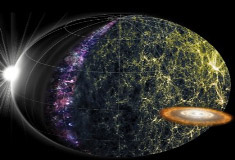
SPHEREx is a NASA Medium Class Explorers mission designed to constrain the physics of inflation by:
- studying its imprints on the three-dimensional large- scale distribution of matter
- tracing the history of galactic light production through a deep multi-band measurement of large-scale clustering investigating the abundance and composition of water and biogenic ices in the early phases of star and planetary disk formation
SPHEREx is the first all-sky spectral survey in the near IR: it will measure near-infrared spectra between 0.7 and 5 microns across the entire sky.